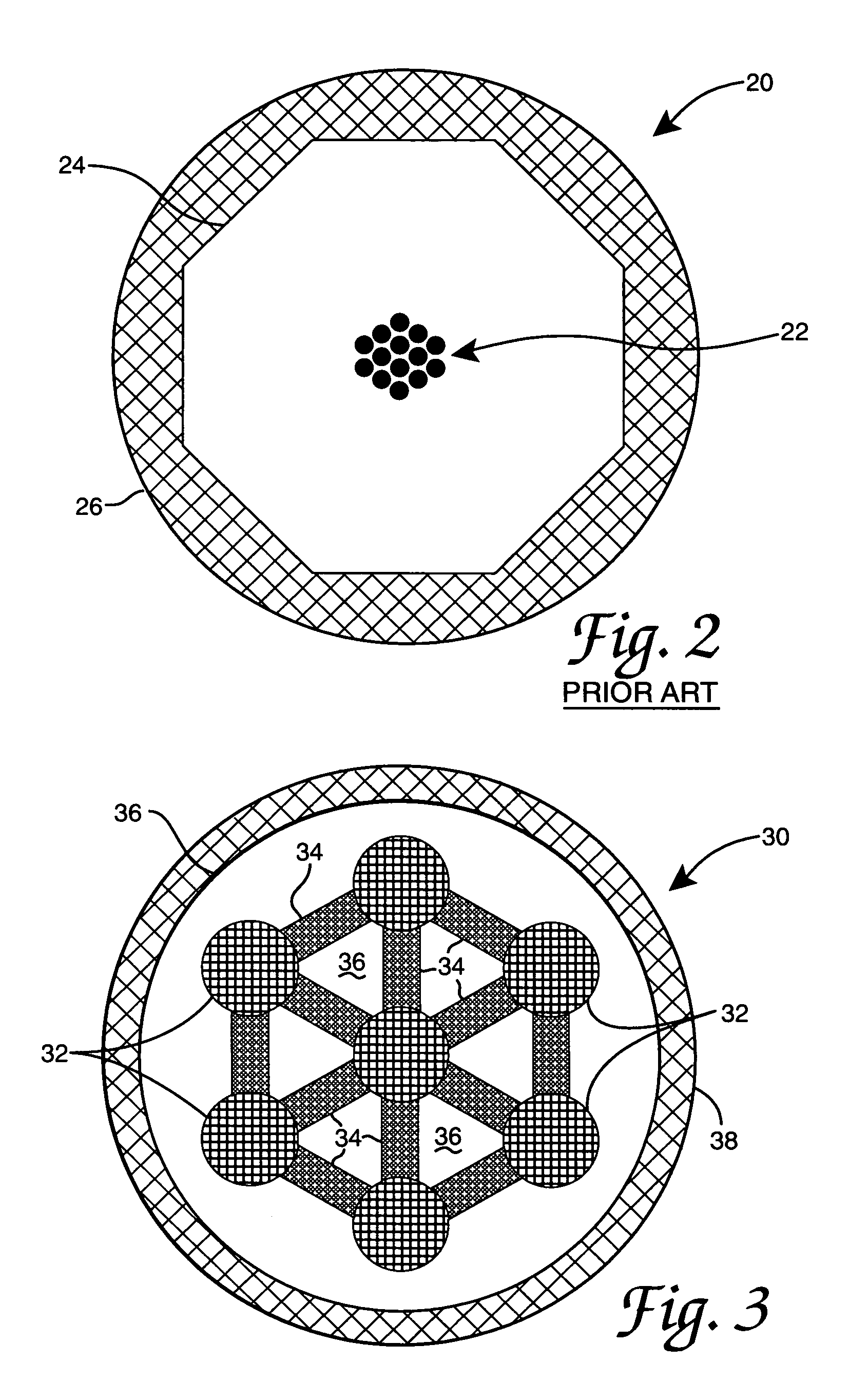Weak coupling bridge for optical fiber cores
a coupling bridge and core technology, applied in the field of high-power fiber lasers, can solve the problems of entanglement of fundamental (in-phase) mode structure, and achieve the effect of strengthening the coupling between the connected cores and strengthening the weak coupling
- Summary
- Abstract
- Description
- Claims
- Application Information
AI Technical Summary
Benefits of technology
Problems solved by technology
Method used
Image
Examples
Embodiment Construction
[0019]FIG. 3 is a cross-section of multicore optic fiber 30 of the present invention. Fiber 30 includes cores 32, bridges 34, inner cladding 36, and outer cladding 38. Each core 32 is laterally connected to adjacent cores 32 by bridges 34. Cores 32 and bridges 34 are embedded in inner cladding 36. Outer cladding 38 circumscribes inner cladding 36.
[0020]Each core 32 is a single transverse-mode optical wave-guide consisting of silicate glass within which is dispersed, or “doped,” a concentration of ions of one, or more, rare-earth species. This doping achieves a population inversion in each of cores 32 through absorption of radiation emitted by a pump source (not shown), such as an array of semiconductor lasers; also known as “pumping.” The pump source is designed to efficiently couple radiation into the pure silicate inner cladding 36 surrounding cores 32.
[0021]Outer cladding 38 surrounds inner cladding 36 and is composed of material having a lower refractive index than that of pure ...
PUM
 Login to View More
Login to View More Abstract
Description
Claims
Application Information
 Login to View More
Login to View More - R&D
- Intellectual Property
- Life Sciences
- Materials
- Tech Scout
- Unparalleled Data Quality
- Higher Quality Content
- 60% Fewer Hallucinations
Browse by: Latest US Patents, China's latest patents, Technical Efficacy Thesaurus, Application Domain, Technology Topic, Popular Technical Reports.
© 2025 PatSnap. All rights reserved.Legal|Privacy policy|Modern Slavery Act Transparency Statement|Sitemap|About US| Contact US: help@patsnap.com



